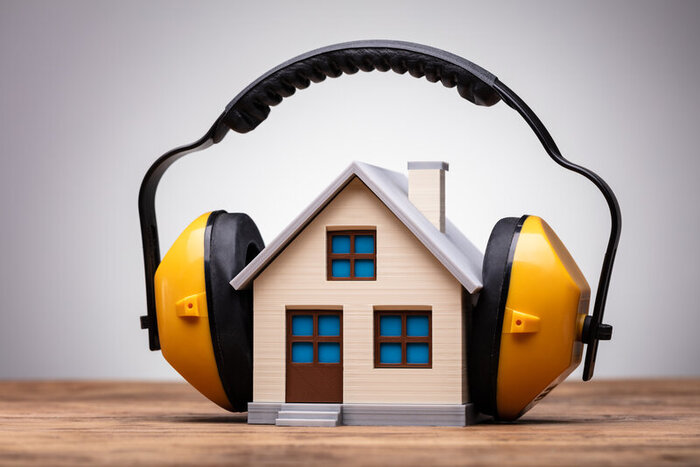
Insulation is essential to whole-home comfort, and that’s typically linked to temperature regulation and energy efficiency. However, insulation also plays a role in reducing sound pollutants. That’s important here in the Bay Area, where houses and apartments are vulnerable to busy street noise and the ambient noise created by neighbors and their dogs.
There are several ways to update or replace insulation to promote energy efficiency and quieter living and working environments. For example, insulation can help reduce noise transference from upstairs to downstairs or between rooms. It can also minimize noise pollution from a busy street, intersection, or neighborhood.
Insulation works to minimize various noises, including:
Remember that while the right insulation type can be used to reduce noise and support quieter living spaces, other home features also play a role. For example, your attic contractor may recommend updates to home envelope sealing, weather stripping, door frames, or windows to further reduce noise pollution.
Not all insulation is good at blocking sound. Just as insulation has R-values that reflect its ability to prevent heat gain and heat loss, some insulations are better at blocking sound waves than others.
Sometimes people assume that higher-density insulation is better at blocking sound than products with less density. In fact, the opposite is true. Lighter, “fluffier” insulation materials do the best job of absorbing sound.
The good news for home and business owners is that the most commonly used and affordable insulation option - fiberglass batts - is also one of the most sound-absorbent. Its spongey design absorbs sound waves, diminishing their power or stopping them altogether.
The key here is ensuring you have adequate insulation, to begin with, and that the insulation has no gaps or spaces between rolls or sheets. If the insulation is damaged or there are gaps between seams, sound can make it through.
Secondly, insulation needs to be thick enough. Standard fiberglass insulation comes in thicknesses ranging from 3 1/2 inches to 12 inches. If you’re installing insulation for comfort and soundproofing, you want insulation thickness to be at least six inches. The thicker the insulation, the more sound it blocks.
Blown-in cellulose is another type of insulation that blocks noise transference. Also called loose-fill insulation, these are blown in by a special machine and are very energy efficient. Blown-in cellulose (or loose fiberglass insulation) works well in all attics, especially those with small, unusually sized, or angled spaces because they fill in spaces that are harder to fit with manually cut insulation batts.
Another bonus of blown-in cellulose insulation options is it is an eco-friendly alternative when you select products made from recycled products. However, loose-fill cellulose is prone to absorbing water, so have your attic inspected and perfected ahead of time to ensure it’s moisture-proof. Also, some loose fill options are more flammable than others. Professional insulation contractors know whether it’s the best option for certain applications, such as around recessed lighting cans or other potential fire hazards.
Mineral wool or rock wool insulation is another environmentally-friendly option that provides substantial soundproofing. However, this insulation is more costly. Unless you have a generous budget to work with, traditional fiberglass batts or blown-in cellulose is the most likely sound-reducing insulation choice for the average home or business owner.
NOTE: Spray foam insulation is a popular, eco-friendly product because of its high insulating properties, ability to be installed in small spaces, and the fact that it helps reinforce certain building materials. However, spray foam insulation is not a good sound insulator. If you’re looking for the best combination of energy efficiency and soundproofing, opt for blown-in cellulose.
Adding or replacing insulation is one way to reduce sound pollution and create quieter living and working spaces. You can do other things to further reduce noise transfer from the outside or from one room to another.
If your home or business has single-paned our outdated windows, they’re not helping the noise issue. Double-paned, laminated glass windows with insulated vinyl frames are the most cost-effective solution for both energy efficiency and sound mitigation. Plus, they come in many colors to match any existing trim.
Any cracks, holes, or deterioration in air sealing and weather stripping channels sound. Inspect the home and optimize whole-home and attic air sealing. Keep in mind that air sealing and ventilation go hand-in-hand. If you improve air sealing around the house, ensure adequate ventilation to promote healthy indoor air quality, moisture control, and temperature stability.
White noise is highly effective at canceling out background noise. Keep your HVAC system circulating fresh air by using the fan system when heating and cooling features aren’t required. Portable air filtration systems, dehumidifiers, and other “white noise” producers also help along these lines.
Metal structural and system elements vibrate and transfer sound throughout a home or building. Surround or coat exposed metal parts (pipes, metal beams, ducts, etc.) with a rubberized material to curb sound transmission. Insulating HVAC ducts also supports lower energy bills, so it’s a win-win.
Again, harder or denser materials transmit sound more than softer, absorbent materials. Consider using carpeting and thick padding if you’re remodeling a home or converting an attic into a living space. If you want hard-surface flooring on upper-level floors, speak to flooring reps about sound-resistant padding to minimize sounds from above. In addition to carpets or thick area rugs, heavy drapes, and other absorbent textiles help to keep rooms quieter.
The team at Attic Solutions helps home, and business owners upgrade or replace insulation while also reducing sound pollution and creating quieter living spaces. Schedule a consultation to learn more about the attic and interior wall insulation for your future quiet home.